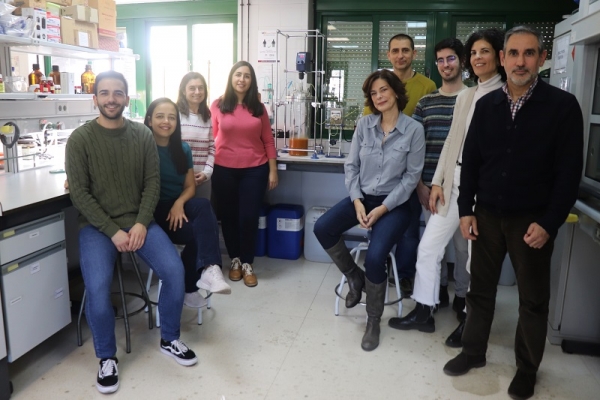Nitrogen oxides (NOx) are a group of gases formed by nitric oxide and nitrogen dioxide. They are produced, above all, by the burning of fossil fuels. Due to their harmful effects on human health and the environment, in recent years they have been in the scientific community's crosshairs. A research team at the Chemical Institute for Energy and the Environment (IQUEMA), attached to the University of Cordoba, has developed a photocatalytic material capable of effectively reducing these gases, achieving results similar to others developed to date, but through a more economical and sustainable process.
Photocatalysis, or how light can decontaminate cities
There are chemical reactions that can be favored or accelerated in the presence of light. In the case of nitrogen oxides, light energy, in the presence of a material that functions as a catalyst, makes it possible to oxidize the nitrogen oxides in the atmosphere and convert them into nitrates and nitrites.
The first author of this research paper, Laura Marín, explained that, unlike other photocatalytic reactions, which only operate under ultraviolet light, this new material boasts the advantage of working effectively with visible light, which is much more abundant and makes up most of the solar spectrum, allowing greater use to be made of the sun's energy.
To do this, the research team has synthesized a new compound by combining two different types of materials: carbon nitride (which allows the reaction to be activated in the presence of visible light) and lamellar double hydroxides, which have the capacity to catalyze the reaction, in addition to featuring economical and easily scalable production.
Professor Ivana Pavlovic, one of the researchers who participated in the study, explained that the new process is capable of converting 65% of nitrogen oxides under visible light irradiation, a percentage very similar to that achieved by other photocatalysts, but with the advantage that this new system uses minerals such as magnesium and aluminum, which are "cheaper, abundant in nature, and benign, compared to other photocatalysts used to date, which contain cadmium, lead or graphene," the researcher pointed out.
Professor of Inorganic Chemistry and IQUEMA Director Luis Sánchez explained that, in this way, the work represents an important step towards the large-scale development of a system that makes it possible to decontaminate the air under real-world conditions, thus reducing one of the most common pollutant gases in cities, and one whose long-term effects can cause serious health problems.
Reference:
L. Marín, M. Benedet, C. Maccato, G. A. Rizzi, O. I. Lebedev, I. Pavlovic, L. Sánchez, D. Barreca, The Efficient Coupling between MgAlTi Layered Double Hydroxides and Graphitic Carbon Nitride Boosts Vis Light-Assisted Photocatalytic NOx Removal. Adv. Sustainable Syst. 2024, 2400496. https://doi.org/10.1002/adsu.202400496


